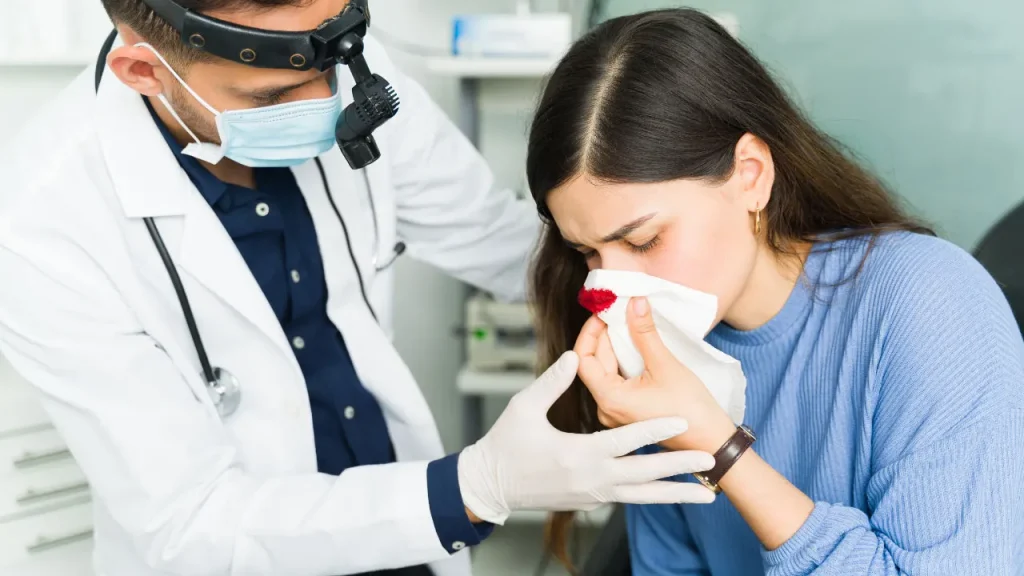The early stalk of the broccoli plant (Brassica oleracea), known as a broccoli sprout, has gained popularity due to its superior nutritional qualities and significant health advantages. These sprouts, which are normally harvested after three to four days, are very nutrient-dense. They include fiber, vitamins, and minerals, but perhaps most significantly, they contain an exceptionally high amount of the glucosinolate glucoraphanin.
You May Also Like:
5 Great Nootropic Herbs for Energy, Focus, and Productivity
Calanus Oil: Benefits, Dosage, Side Effects, Drug Interactions, and Other Important Information
Broccoli Sprouts: Benefits, Dosage, Side Effects, Drug Interactions, and Other Important Information is an original (NootropicsPlanet) article.
The Nature of Broccoli Sprouts
The immature, fragile branches of the Brassica oleracea plant, which produces broccoli, are known as sprouts. Usually, three to four days after germination, when they are between one and two inches tall, they are harvested. Sprouts have larger quantities of healthy chemicals than mature broccoli plants since this is the development stage when the plant’s nutritional density is at its highest.
Broccoli sprouts are a good source of dietary fiber, vitamins A, C, and E, as well as minerals like calcium and iron. They are distinguished by their high levels of glucosinolates, particularly glucoraphanin, which the body converts to the beneficial substance sulforaphane. The sprouts may be eaten raw or very gently cooked and have a strong, peppery taste.
Health Benefits of Broccoli Sprouts
Sulforaphane is the main reason broccoli sprouts’ are beneficial for your health. Sulforaphane may be helpful in preventing cancer and maintaining cardiovascular, neuroprotective, and anti-inflammatory health, according to several research.
Sulforaphane has been shown to reduce the development of many cancer types in vitro, including breast, colon, and prostate cancer. This is done mostly by inducing apoptosis and cell cycle arrest.
Sulforaphane may also improve carcinogen detoxification and lower carcinogen bioactivation, according to animal studies, indicating a possible role in cancer prevention.
Sprouts of broccoli may also aid the heart. Sulforaphane was discovered to lower blood pressure and enhance cardiac function in hypertensive rats. Sulforaphane’s antioxidant capabilities and capacity to enhance endothelial function may be the mechanism behind these benefits.
Sulforaphane has shown potential advantages in models of neurodegenerative disorders including Alzheimer’s and Parkinson’s in terms of neuroprotection. These neuroprotective benefits of the substance could be attributed to its capacity to diminish oxidative stress, inflammation, and neuronal death.
Finally, research have shown that sulforaphane has anti-inflammatory capabilities. The substance has the potential to be helpful for illnesses marked by chronic inflammation since it may suppress the nuclear factor-kappa B (NF-kB) pathway, a key regulator of inflammation.

The Chemistry of Broccoli Sprouts
Glucosinolates are chemicals with sulfur that are widely distributed in cruciferous plants like broccoli. Glucoraphanin is the main glucosinolate found in broccoli sprouts. After ingestion, the plant or gut microbiota enzyme myrosinase hydrolyzes glucoraphanin to create sulforaphane, an isothiocyanate known for its powerful biological effects.
Sulforaphane is a weakly reactive, tiny chemical that may alter many biological processes. The nuclear factor erythroid 2-related factor 2 (Nrf2) pathway, a crucial regulator of cellular resistance to oxidative stress, is the route for which it is well known. Phase II detoxification enzymes, which are essential for removing dangerous compounds from the body and defending cells from injury, are produced more quickly when the Nrf2 pathway is activated.
Physiological Mechanisms of Action of Broccoli Sprouts
Sulforaphane, a substance produced by myrosinase via the enzymatic conversion of glucoraphanin, is principally responsible for the health-improving properties of broccoli sprouts. Sulforaphane’s physiological mechanisms of action are complex and include interactions with numerous cellular pathways.
The stimulation of the nuclear factor erythroid 2-related factor 2 (Nrf2) pathway is one of the main mechanisms of action. An antioxidant protein’s expression is controlled by the transcription factor Nrf2, which guards against oxidative damage brought on by injury and inflammation. As a Nrf2 activator, sulforaphane strengthens the body’s defenses against oxidative stress, a major factor in many illnesses including cancer, cardiovascular disease, and neurological disorders.
Inflammation’s primary regulator, the NF-B pathway, is likewise modulated by sulforaphane. Sulforaphane may possibly lessen inflammation by blocking the NF-B pathway, offering therapeutic advantages for inflammatory illnesses.
Sulforaphane has shown to be able to affect carcinogenesis at several phases, including start, promotion, and advancement, in the setting of cancer. It may increase apoptosis (programmed cell death), limit cell growth, and stimulate phase II detoxifying enzymes, all of which have chemopreventive effects.
Sulforaphane has shown promise in neuroprotection by lowering oxidative stress, inflammation, and neuronal death, potentially giving defense against conditions like Alzheimer’s and Parkinson’s.
Overall, these pathways may allow broccoli sprouts and the substances produced from them to bestow a variety of health advantages, perhaps providing therapeutic utility in a range of illness scenarios.

Optimal Dosage and Side Effects of Broccoli Sprouts
Given their potential health advantages, broccoli sprouts have been recommended as a dietary component or nutritional supplement. The heterogeneity in individual reactions and the impact of preparation techniques on the availability of sulforaphane make it difficult to determine an ideal dose.
Sulforaphane dosages ranging from 25 to 150 micromoles have been utilized in clinical studies, often given as broccoli sprout extracts. The majority of individuals handled these dosages well, however a few had moderate stomach discomfort.
Potential Substance Interactions
Although broccoli sprouts typically have a good safety profile, possible interactions with other drugs should be taken into account. For instance, the stimulation of phase II detoxification enzymes in broccoli sprouts may impact the metabolism of medicines processed by the cytochrome P450 enzyme system.
In addition, while helpful in certain circumstances, sulforaphane’s anticoagulant activity may enhance the effects of anticoagulant and antiplatelet medications, raising the risk of bleeding. Therefore, those who are taking such drugs should speak with their doctors before beginning a broccoli sprout regimen.

Responsible Uses of Broccoli Sprout
Given the strong data supporting the health advantages of broccoli sprouts, including these sprouts in one’s diet may be a wise dietary move. You may add fresh sprouts to salads, sandwiches, or smoothies, and supplements made from broccoli sprouts are also offered.
However, it’s crucial to keep in mind that the health advantages are likely to be greatest when broccoli sprouts are included in a balanced, diverse diet rather than used as a replacement for one. Additionally, those who have thyroid issues should use care since the goitrogen concentration of broccoli sprouts may interfere with thyroid function when consumed in excessive quantities.
Broccoli sprouts may be heated (blanched) to deactivate the myrosinase enzyme, which lowers the amount of sulforaphane that is available. On the other hand, sulforaphane synthesis may be increased by chewing raw broccoli sprouts or by ingesting them with a source of myrosinase (such as mustard seed).
Broccoli Sprout:
Conclusion
These tiny green gems show immense promise in cancer prevention, cardiovascular health, neuroprotection, and reducing inflammation. However, responsible consumption is crucial. While they can enhance the flavor of salads, sandwiches, and smoothies, it’s important to exercise moderation, particularly if you have thyroid concerns.
Remember that broccoli sprouts shine brightest when they are part of a well-rounded and diverse dietary plan. So, go ahead, relish the peppery goodness of these sprouts, and unlock their potential for your overall well-being.

References:
- “The Chemistry and Health Benefits of Sulforaphane.” Retrieved From: https://www.ncbi.nlm.nih.gov/pmc/articles/PMC4637098/
- “Sulforaphane and Its Effects on Cancer, Mortality, Aging, Brain and Behavior, Heart Disease & More.” Retrieved From: https://www.foundmyfitness.com/episodes/sulforaphane
- “Broccoli Sprouts: An Exceptionally Rich Source of Inducers of Enzymes that Protect Against Chemical Carcinogens.” Retrieved From: https://www.pnas.org/content/94/19/10367
Important Note: The information contained in this article is for general informational purposes only, and should not be construed as health or medical advice, nor is it intended to diagnose, prevent, treat, or cure any disease or health condition. Before embarking on any diet, fitness regimen, or program of nutritional supplementation, it is advisable to consult your healthcare professional in order to determine its safety and probable efficacy in terms of your individual state of health.
Regarding Nutritional Supplements Or Other Non-Prescription Health Products: If any nutritional supplements or other non-prescription health products are mentioned in the foregoing article, any claims or statements made about them have not been evaluated by the U.S. Food and Drug Administration, and such nutritional supplements or other health products are not intended to diagnose, treat, cure, or prevent any disease.


